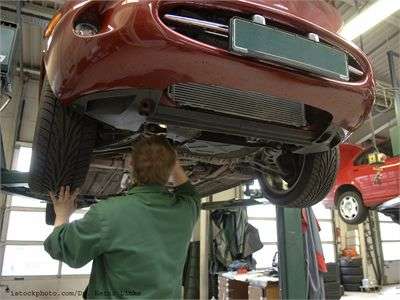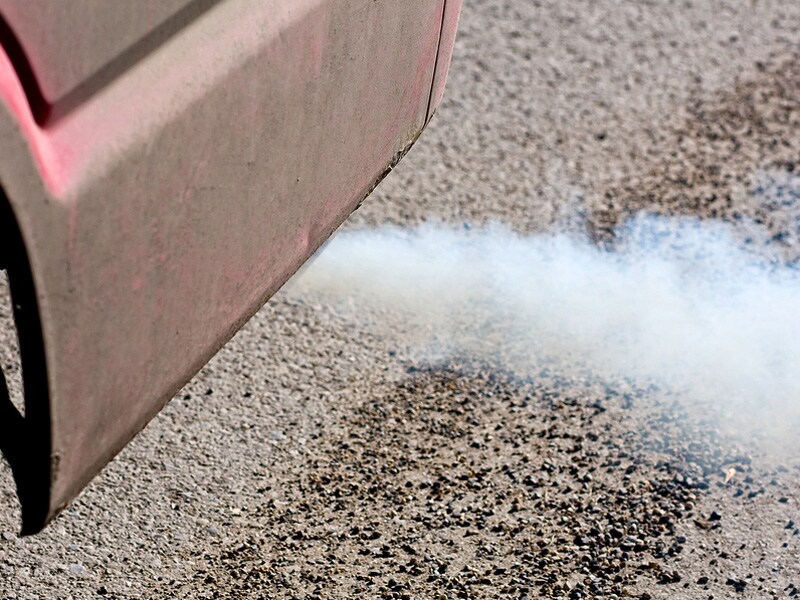Recent Articles
Popular Makes
Body Types
Car Engine Smoking | Car Trouble

Smoke from the tailpipe is not good news, but it does not necessarily mean the engine must be rebuilt. There are a few things that need to be done to determine the cause of smoke from an engine and what it can mean in the long run. The first thing that must be done is to determine the color of smoke that is coming from the tailpipe. The three most common colors of smoke emitted tailpipe are black, blue and white.
Black smoke is caused by excess fuel that has entered the cylinder area and cannot be burned completely. The burning of excess fuel is also referred to as, "running rich." When black smoke is noticed coming from the tailpipe, it is often coupled with the complaint of poor fuel mileage. Although excess fuel will usually effect engine performance, reduce fuel economy, and produce a fuel odor, black smoke from the tailpipe is not, as a rule, a great cause for alarm. Excess fuel can leak into the cylinder if the carburetor is out of adjustment. A faulty fuel pump, a leaky fuel injector, or a failing engine computer or computer sensor can be other reasons for fuel entering the cylinder. If black smoke is present, • Check the engine oil to make sure excess fuel has not contaminated it. • Look at the engine oil dipstick, or look at the under side of the engine oil filler cap. If the oil is contaminated, it will have the appearance of a chocolate milkshake. • Do not start the engine if a heavy, raw fuel smell can be detected in the engine oil. • Call your mechanic and advise him of what you have found.

Blue smoke is caused by engine oil entering the cylinder area and being burned along with the fuel air mixture. As with the white smoke, just a small drop of oil leaking into the cylinder can produce blue smoke from the tailpipe. Blue smoke is more common in older or higher mileage vehicles than newer cars with fewer miles. Engine oil can get inside the cylinder in a number of ways. The engine has many seals, gaskets and O-rings that are designed to keep the engine oil from entering the cylinder. If blue smoke is the problem, it is likely that one or more of the seals is leaking or has cracked. If enough oil leaks into the cylinder and fouls the spark plug, it will cause a misfire or an engine miss in that cylinder. To remedy this problem; • Clean the spark plug of the oil – if this doesn't work, • Replace the spark plug • Use thicker weight engine oil • Use an oil additive designed to reduce oil leaks

White smoke is steam. White smoke is caused by water and or antifreeze entering the cylinder and the result of the engine trying to burn it with the fuel. Head gaskets are the primary types of gaskets that keep the antifreeze from entering the cylinder area. The cylinder is where the fuel and air mixture are being compressed and burned. Any amount of antifreeze that enters the cylinder area will result in producing white steam that will billow from tailpipe. If white smoke is present; • Check to see if the proper amount of antifreeze is inside the radiator and the overflow bottle. • Check to see if antifreeze has contaminated the engine oil. • Look at the engine oil dipstick, or look at the under side of the engine oil filler cap. If the oil is contaminated with antifreeze, it will have the appearance of a chocolate milkshake. • Do not start the engine if the oil is contaminated with antifreeze, as serious internal engine damage will likely result.
